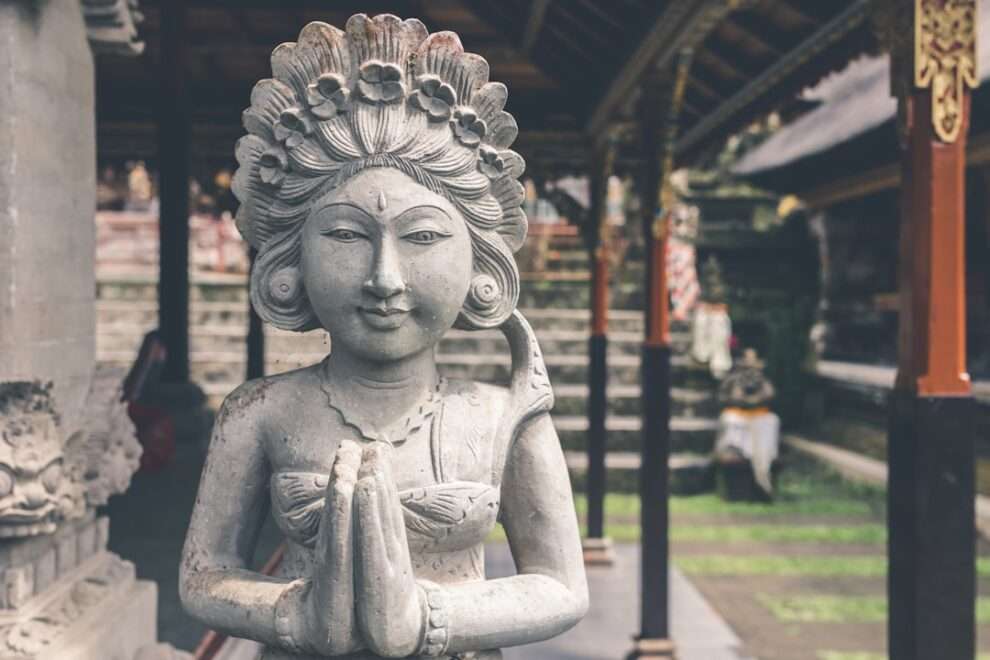Stoicism is an ancient philosophy that has gained renewed popularity in recent years due to its relevance in modern times. In a world filled with uncertainty, stress, and adversity, building resilience has become more important than ever. Stoicism offers a practical and effective approach to developing inner strength and resilience, enabling individuals to navigate life’s challenges with grace and equanimity.
Key Takeaways
- Stoicism is a philosophy that emphasizes the importance of resilience and emotional control in the face of adversity.
- Embracing Stoic principles in daily life can help individuals find inner strength and meaning in difficult situations.
- Simple objects can serve as symbols of Stoic principles and help individuals cultivate resilience.
- Mindfulness is an important aspect of Stoicism and can aid in building resilience.
- Emotional control is a key component of Stoic philosophy and can help individuals overcome fear and anxiety.
What is Stoicism and How Does it Help Build Resilience?
Stoicism originated in ancient Greece and was later developed by Roman philosophers such as Seneca, Epictetus, and Marcus Aurelius. At its core, Stoicism teaches individuals to focus on what they can control and accept what they cannot. It emphasizes the importance of cultivating virtues such as wisdom, courage, temperance, and justice.
Stoicism helps build resilience by teaching individuals to shift their perspective and reframe challenges as opportunities for growth. By accepting that adversity is an inevitable part of life, Stoics learn to embrace difficulties rather than resist them. This mindset allows them to develop resilience and bounce back from setbacks more quickly.
Famous Stoics such as Marcus Aurelius, the Roman Emperor, and Epictetus, a former slave turned philosopher, have left a lasting impact on history. Their writings and teachings continue to inspire individuals to this day. Marcus Aurelius’ “Meditations” is considered one of the greatest works of Stoic philosophy, offering practical advice on how to live a virtuous life and find inner peace amidst chaos.
The Power of Embracing Stoic Principles in Daily Life
Embracing Stoic principles in daily life can have profound benefits for both personal and professional growth. By practicing Stoicism, individuals learn to detach themselves from external circumstances and focus on their own thoughts and actions. This self-mastery allows them to respond to challenges with clarity and composure.
Stoicism teaches individuals to cultivate virtues such as wisdom, courage, temperance, and justice. By embodying these virtues, individuals can make better decisions, maintain self-discipline, and treat others with fairness and kindness. This not only improves personal relationships but also enhances professional success.
Many successful individuals throughout history have practiced Stoicism and credited it for their achievements. For example, the entrepreneur and author Tim Ferriss has spoken about how Stoic principles have helped him overcome obstacles and achieve his goals. Similarly, the investor and philanthropist Ray Dalio has incorporated Stoic philosophy into his investment strategies and leadership principles.
Stoic Symbols: Finding Inner Strength in Simple Objects
| Symbol | Meaning | Importance |
|---|---|---|
| Anchor | Stability, grounding, perseverance | Reminds us to stay grounded and persevere through difficult times |
| Stoic Mask | Emotional control, resilience | Encourages us to maintain emotional control and build resilience in the face of adversity |
| Hourglass | Time, impermanence, mindfulness | Reminds us to be mindful of the present moment and to make the most of our time |
| Phoenix | Rebirth, renewal, transformation | Symbolizes the potential for growth and transformation, even in the face of great adversity |
| Compass | Direction, purpose, self-discipline | Helps us stay focused on our goals and maintain self-discipline in pursuit of our purpose |
Stoic symbols are objects or concepts that represent Stoic principles and can serve as reminders of inner strength and resilience. These symbols can be simple everyday objects or abstract concepts that hold personal significance.
One example of a Stoic symbol is the ancient Greek symbol of the stoic philosopher Zeno of Citium, which represents the idea of living in accordance with nature. Another example is the image of a ship sailing through rough waters, symbolizing the ability to navigate through life’s challenges with grace and resilience.
Using Stoic symbols can help individuals find inner strength by providing a visual reminder of their values and principles. By incorporating these symbols into their daily lives, individuals can cultivate a sense of purpose and resilience.
The Role of Mindfulness in Stoicism and Building Resilience
Mindfulness is a key component of Stoicism and plays a crucial role in building resilience. In Stoicism, mindfulness refers to being fully present in the current moment and aware of one’s thoughts, emotions, and actions.
By practicing mindfulness, individuals can develop greater self-awareness and gain control over their thoughts and emotions. This allows them to respond to challenges with clarity and equanimity, rather than reacting impulsively or being overwhelmed by negative emotions.
Practical tips for practicing mindfulness in daily life include setting aside dedicated time for reflection and self-examination, practicing deep breathing exercises, and engaging in activities that promote relaxation and mental clarity, such as meditation or journaling.
The Importance of Emotional Control in Stoic Philosophy

Emotional control is a fundamental aspect of Stoic philosophy and is essential for building resilience. Stoicism teaches individuals to detach themselves from external circumstances and focus on their own thoughts and actions. By cultivating emotional control, individuals can respond to challenges with calmness and rationality.
Emotional control involves recognizing and acknowledging one’s emotions without being controlled by them. It requires individuals to pause and reflect before reacting, allowing them to make more reasoned decisions and avoid impulsive actions.
Examples of individuals who practice emotional control in Stoicism include Nelson Mandela, who maintained composure and forgiveness during his imprisonment, and Viktor Frankl, who found meaning and purpose in the face of extreme adversity in the concentration camps of World War
Stoicism and the Art of Finding Meaning in Adversity
Stoicism teaches individuals to find meaning in adversity by reframing challenges as opportunities for growth. By accepting that adversity is an inevitable part of life, Stoics learn to embrace difficulties rather than resist them.
Finding meaning in adversity helps build resilience by providing individuals with a sense of purpose and direction. It allows them to view setbacks as valuable learning experiences and motivates them to persevere in the face of obstacles.
Examples of individuals who found meaning in adversity through Stoicism include Nelson Mandela, who used his imprisonment as an opportunity to reflect on his values and develop a vision for a better future, and Viktor Frankl, who found purpose in helping others find meaning in their suffering.
The Stoic Practice of Negative Visualization and its Benefits
Negative visualization is a practice in Stoicism that involves imagining the worst-case scenarios in order to appreciate what one has and cultivate gratitude. By contemplating the loss of loved ones, possessions, or even one’s own life, individuals can develop a greater appreciation for the present moment and cultivate resilience in the face of adversity.
Negative visualization helps build resilience by preparing individuals for potential challenges and reducing the fear of loss. By mentally rehearsing difficult situations, individuals can develop a sense of emotional preparedness and be better equipped to handle unexpected setbacks.
Examples of individuals who practice negative visualization in Stoicism include the philosopher Seneca, who wrote extensively about the benefits of contemplating death and loss, and the entrepreneur and author Ryan Holiday, who incorporates negative visualization into his daily routine as a way to maintain perspective and gratitude.
Stoic Wisdom for Overcoming Fear and Anxiety
Stoic wisdom offers valuable insights for overcoming fear and anxiety. Stoicism teaches individuals to focus on what they can control and accept what they cannot. By shifting their perspective and reframing challenges as opportunities for growth, Stoics can reduce fear and anxiety.
Stoic wisdom also emphasizes the importance of cultivating virtues such as courage and temperance. By practicing courage, individuals can confront their fears and take action despite their anxieties. By practicing temperance, individuals can develop self-control and avoid being overwhelmed by fear or anxiety.
Examples of individuals who overcame fear and anxiety through Stoicism include the philosopher Epictetus, who was born into slavery but rose above his circumstances to become a respected teacher, and the writer and philosopher Ralph Waldo Emerson, who drew inspiration from Stoic principles in his own life.
The Stoic Virtue of Courage: How to Cultivate it in Daily Life
Courage is a central virtue in Stoicism and is essential for building resilience. Stoicism teaches individuals to confront their fears and take action despite their anxieties. By practicing courage, individuals can overcome obstacles and achieve their goals.
Cultivating courage in daily life through Stoicism involves recognizing one’s fears and anxieties and taking deliberate steps to confront them. This may involve setting small, achievable goals that gradually push one’s comfort zone, seeking support from others, or practicing visualization techniques to mentally rehearse challenging situations.
Examples of individuals who cultivated courage through Stoicism include the philosopher Seneca, who faced persecution and exile with grace and resilience, and the civil rights leader Martin Luther King Jr., who demonstrated immense courage in the face of violence and adversity.
Embracing Stoicism: Practical Tips for Building Resilience and Inner Strength
To embrace Stoicism and build resilience and inner strength, individuals can follow these practical tips:
1. Focus on what you can control: Accept that there are things beyond your control and focus on your own thoughts, actions, and attitudes.
2. Cultivate virtues: Strive to embody virtues such as wisdom, courage, temperance, and justice in your daily life.
3. Practice mindfulness: Be fully present in the current moment and aware of your thoughts, emotions, and actions.
4. Embrace challenges: Reframe difficulties as opportunities for growth and learning.
5. Find meaning in adversity: Seek purpose and direction in the face of setbacks and challenges.
6. Practice emotional control: Recognize and acknowledge your emotions without being controlled by them.
7. Engage in negative visualization: Contemplate worst-case scenarios to cultivate gratitude and emotional preparedness.
8. Confront fears with courage: Take deliberate steps to confront fears and anxieties, gradually pushing your comfort zone.
By embracing Stoicism and incorporating these principles into daily life, individuals can build resilience, find inner strength, and navigate life’s challenges with grace and equanimity.
In conclusion, Stoicism offers a practical and effective approach to building resilience in today’s world. By embracing Stoic principles such as focusing on what one can control, practicing mindfulness, cultivating virtues, finding meaning in adversity, and practicing emotional control, individuals can develop inner strength and navigate life’s challenges with grace and equanimity. By incorporating Stoic symbols, practicing negative visualization, and cultivating courage, individuals can further enhance their resilience and build a strong foundation for personal and professional success. Embracing Stoicism is not just a philosophical exercise; it is a practical way of living that can transform one’s life and enable them to thrive in the face of adversity. So, why not embrace Stoicism and start building resilience and inner strength today?

















Add Comment